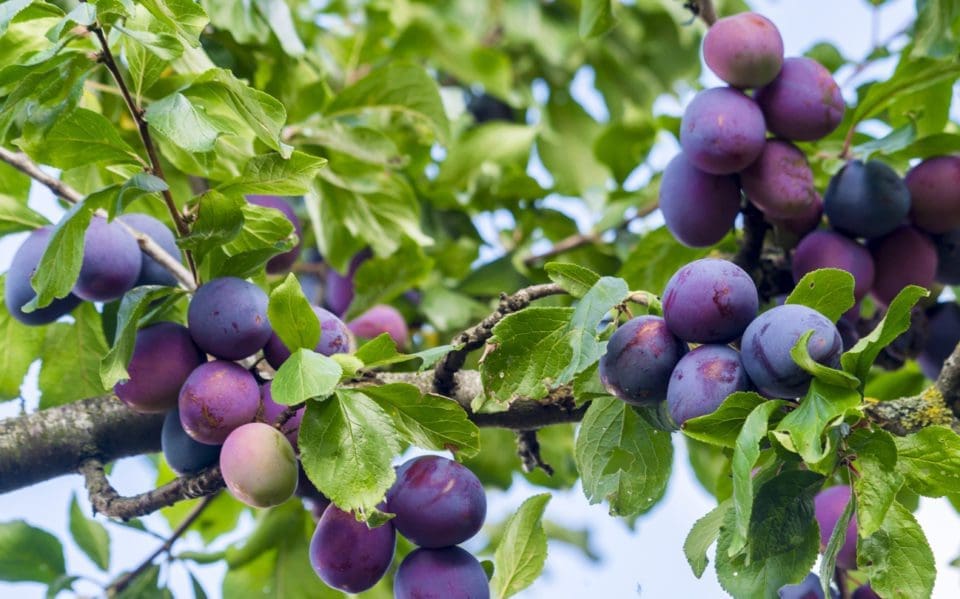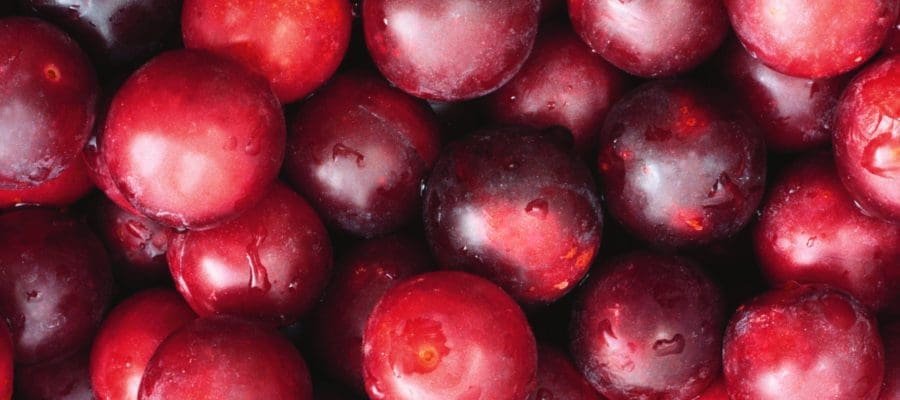Plums are addictive. Just plant a tree in your garden, wait for it to become heavily laden with ripe juicy fruit, as it surely will, and try to resist eating one, then another, then another…
Apart from the wonderful juicy crop, plums have the advantage of needing very little care; when it comes to pruning, for example, the message is, less is best!
This, of course, is great news if you are just starting out with fruit and have little or no experience of tree pruning. So what do they need? Not a great deal really – they do require a sunny spot to do well and a deep, rich, moisture-retentive soil is ideal. Shelter is the essential requirement as you will see below.
Plum Varieties
There are lots to choose from, including culinary (cooking), dessert (eating) and dual-purpose varieties and also the closely related damsons and gages.
Of the desserts, the most popular variety for many years has been ‘Victoria’. A very heavy cropping variety, its one disadvantage was that it previously made a large tree and was not really suitable for small gardens.
However, dwarfing rootstocks such as St Julien A and Pixy have helped to make it, and other varieties, more manageable. But there are many more varieties available, some relatively new, which all have their own flavours and characteristics.

Plum Growing Tips
Trees are planted during the dormant season (October to March) and are quite tolerant of poor growing conditions; however, to do well they need a sunny, sheltered spot where cold winds as well as frost won’t damage the beautiful blooms.
If possible, plant near the house so you can see the lovely display of flowers in a good year. Although some varieties such as ‘Victoria’ and the cooking variety ‘Czar’ are self-fertile, many others are not and you will need to check with your supplier as to whether another tree will be necessary to ensure good pollination. Of course, self-fertile varieties can be used to pollinate others that fruit at the same time.
Dig in plenty of organic matter such as garden compost or manure prior to planting – the autumn before if possible – as this helps the soil to hold on to water during the dry summer months once it has rotted down well.
Make sure that the graft (join between the roots and fruiting wood) is well above soil level, using the water or soil mark on the trunk as a guide.
Fans, cordons and other walltrained forms will need to have horizontal support wires installed before planting and these should be positioned about 45cm (18in) apart.
Pruning Plums
No pruning is carried out immediately after planting plums in the winter. In fact all pruning is carried out from April to June and is kept to a minimum – in the case of an established bush tree it is restricted to removing crossing, damaged or dead branches.
There are good reasons for only pruning in the summer months and it is to do with two damaging diseases – silver leaf and bacterial canker – both of which can be, although rarely are, fatal to the tree.
Pruning in the growing season helps to keep these diseases at bay by using the rising sap to keep diseases out of new wounds.
Wasps can also be a problem, taking advantage of damage caused by pecking birds. Cover low-growing clusters of fruit with netting and hang wasp traps in the tree.
Scrumptious recipes for your homegrown plums
More grow guides
For more growing tips and guides, you should subscribe to Kitchen Garden – you’ll receive free seeds with every single issue too!











